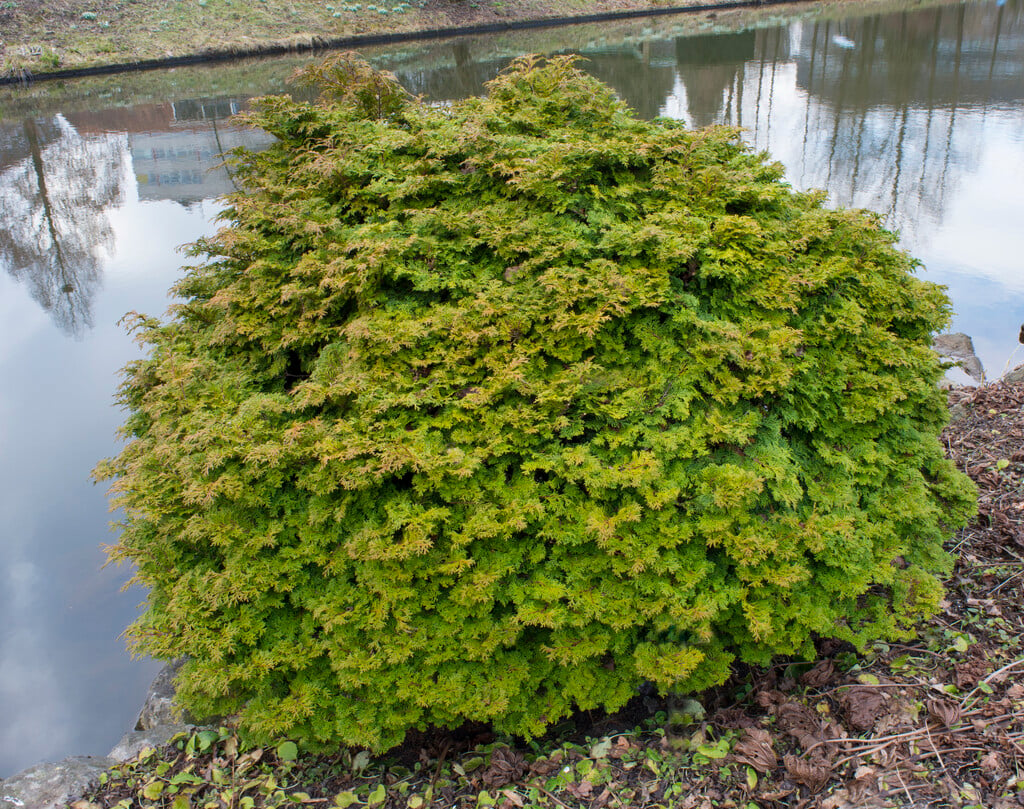Size
Ultimate height
1.5–2.5 metresTime to ultimate height
20–50 yearsUltimate spread
0.5–1 metresGrowing conditions
Moisture
Moist but well–drainedpH
Acid, Alkaline, NeutralColour & scent
| Stem | Flower | Foliage | Fruit | |
| Spring | Bronze Green | |||
|---|---|---|---|---|
| Summer | Bronze Green | |||
| Autumn | Bronze Green | |||
| Winter | Bronze Green |
Position
- Full sun
Aspect
East–facing or South–facing or West–facing
Exposure
Exposed or Sheltered Hardiness
H7Botanical details
- Family
- Cupressaceae
- Native to GB / Ireland
- No
- Foliage
- Evergreen
- Habit
- Bushy, Spreading branched
- Genus
Chamaecyparis are evergreen trees, usually of narrowly ovoid or columnar outline, with much-branched sprays of small scale-like leaves, and small, globose cones; tiny red male cones are conspicuous in a few cultivars
- Name status
Accepted
How to grow
Cultivation
Grows well in moist but well-drained soil. Tolerant of chalk soils but prefers slightly acidic soil
Propagation
Propagate by seed and semi-hardwood cuttings
Suggested planting locations and garden types
- Architectural
- City and courtyard gardens
- Cottage and informal garden
- Patio and container plants
- Low Maintenance
- Flower borders and beds
- Hedging and screens
Pruning
No pruning required but if used as hedging, trim twice a year to maintain shape
Pests
May be susceptible to aphids, juniper scale and shoot-boring moths
Diseases
May be susceptible to honey fungus and Phytophthora root diseases
Get involved
The RHS is the UK’s gardening charity, helping people and plants to grow - nurturing a healthier, happier world, one person and one plant at a time.
